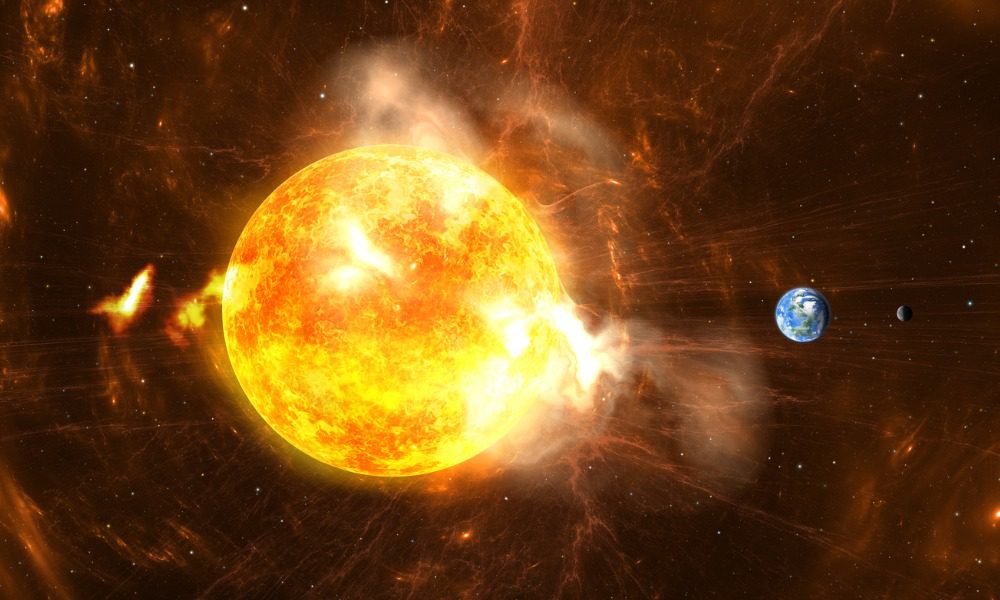Insurers warned against threat from space storms

Insurers warned against threat from space storms | Insurance Business Canada
Catastrophe & Flood
Insurers warned against threat from space storms
Current solar cycle predicted to peak next year
Catastrophe & Flood
By
Terry Gangcuangco
Insurers are being warned that a significant space storm – which has the capacity to disrupt radio communications, power grids, spacecraft, and satellite navigation – could potentially result in greater losses for the industry than catastrophic events like 2005’s Hurricane Katrina.
A new Bloomberg Intelligence (BI) report pointed out that the space storm from May 10 to 12 may be a precursor to more severe events as the current solar cycle is expected to peak in 2025.
On May 10, the National Oceanic and Atmospheric Administration’s space weather prediction centre in Colorado issued a warning about a large sunspot cluster that had generated multiple strong solar flares. Several of the flares, accompanied by coronal mass ejections (CMEs), were headed towards Earth.
CMEs, which are bursts of plasma and magnetic fields from the sun’s corona, can trigger magnetic storms on Earth, possibly disrupting communications, power grids, navigation systems, and satellite operations.
The G5 rating represents the highest level of geomagnetic storm warnings issued by the space weather prediction centre. BI highlighted that the last G5 storm in October 2003 caused power outages in Sweden and damaged transformers in South Africa.
Charles Graham, a senior industry analyst for insurance at BI, noted: “Evidence from May 10-12 suggests the level of disruption caused by the solar storm on this occasion was relatively modest. There were no significant power failures, though extreme deviations in electrical wave patterns were widely observed across the US.
“Elon Musk’s Space X Starlink internet constellation reported a degraded service, but it quickly returned to normal. The storm was also sufficient to result in navigational errors in tractors and other equipment relying on GPS and drove some farmers in the US and Canada to halt planting. Aircraft were also diverted to reduce the exposure of passengers and crew to radiation.”
The analyst added: “The outcome could nevertheless have been much worse, which explains why the UK regards space storms as one of the highest priority natural hazards in its National Risk Register.”
Meanwhile, BI cited the importance of early warning systems for solar storms.
“NASA (National Aeronautics and Space Administration) is using artificial intelligence to analyze spacecraft measurements of solar wind to predict when an impending solar storm might strike,” Graham said.
“The technology could provide 30 minutes’ notice of where a geomagnetic storm is likely to occur anywhere on Earth, enough time it is hoped for power grids and other critical infrastructure to take preventative measures.”
What do you think about this story? Share your thoughts in the comments below.
Related Stories
Keep up with the latest news and events
Join our mailing list, it’s free!






